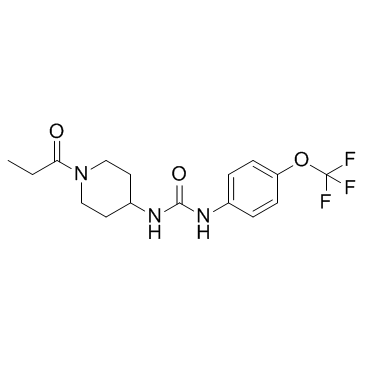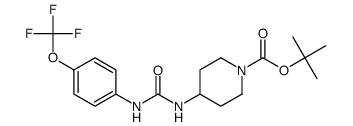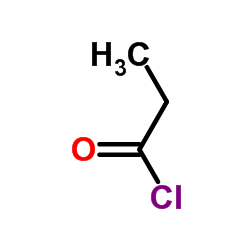| Description |
TTPU is a soluble epoxide hydrolase (sEH) inhibitor with IC50 values of 37 and 3.7 nM for monkey and human sEH, respectively.
|
| Related Catalog |
|
| Target |
IC50: 37 nM (Monkey sEH), 3.7 nM (Human sEH)[1]
|
| In Vitro |
Soluble epoxide hydrolase inhibitors (sEHIs) possess anti-inflammatory, antiatherosclerotic, antihypertensive and analgesic properties[1]. In the Caco-2 cells permeability assay, TPPU rapidly passes the cell monolayer, suggesting it will have a good intestinal permeability[2].
|
| In Vivo |
TPPU is suitable for investigating soluble epoxide hydrolase biology and the role of epoxide-containing lipids in modulating inflammatory diseases. TPPU displays high plasma concentrations when dosed orally at 0.3 mg/kg and drug-like properties. The Cmax increases with dose from 0.3 to 3 mg/kg for TPPU[1]. Following administration in drinking water to rats (0.2, 1, and 5 mg TPPU/L with 0.2% PEG400), TPPU’s blood concentration increases dose dependently within the treatment period to reach an almost steady state after 8 days[2]. The sEH inhibitor, TPPU, shows antidepressant effects in animal models of depression. Expression of sEH protein is increased in the brain of chronically stressed mice and depressed patients. Prophylactic sEH inhibition or sEH-KO results in resilience to repeated social defeat stress, associated with increased BDNF-TrkB signaling in prefrontal cortex and hippocampus of KO mice[3].
|
| Cell Assay |
Cell monolayers that exceeds a resistance of 300 Ω cm-2 are incubated with either 1 μM or 10 μM of TPPU solution in DMSO on the apical side. Medium samples on the apical and basolateral side are collected and frozen immediately after 1, 3 and 6 hours. The apparent permeability coefficient is calculated for t=1 h[2].
|
| Animal Admin |
Rats: Water is provided ad libitum containing 0.2% PEG400 with and without TPPU at a concentration of 0.2 mg/L, 1 mg/L and 5 mg/L during the treatment period (8 days). Before (0 h) and after 2 h, 4 h, 8 h, 1 d, 2 d, 4 d and 8 d, 10 μL blood are sampled from the tail vain. The blood is directly mixed with 50 μL deionzed water28 and frozen until analysis. On day 8, the animals are sacrificed by cardiac puncture after anesthesia. Plasma and whole blood are sampled[2]. Monkeys: TPPU is prepared in 0.3, 1 and 3 mg/kg doses and is administered to four animals with 48 h dosing intervals based on the t1/2 of the compound obtained from the first cassette dosing. Blood is collected from animals at time points 0, 0.25, 0.5, 1, 2, 3, 4, 8, 24 and 48 h after each dosing for analysis[1].
|
| References |
[1]. Ulu A, et al. Pharmacokinetics and in vivo potency of soluble epoxide hydrolase inhibitors in cynomolgus monkeys. Br J Pharmacol. 2012 Mar;165(5):1401-12. [2]. Ostermann AI, et al. Oral treatment of rodents with soluble epoxide hydrolase inhibitor 1-(1-propanoylpiperidin-4-yl)-3-[4-(trifluoromethoxy)phenyl]urea (TPPU): Resulting drug levels and modulation of oxylipin pattern. Prostaglandins Other Lipid Mediat. 2015 Sep;121(Pt A):131-7. [3]. Ren Q, et al. Gene deficiency and pharmacological inhibition of soluble epoxide hydrolase confers resilience to repeated social defeat stress. Proceedings of the National Academy of Sciences of the United States of America (2016), 113(13), E1944-E1952.
|



